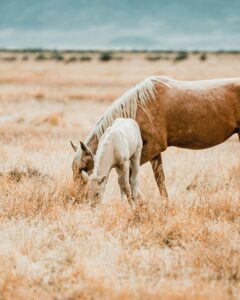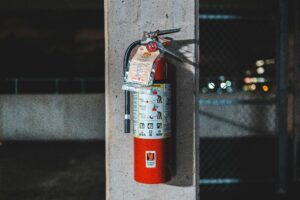blockquote {
font-style: italic;
}
The Wild Horse and Burro Protection Act of 2025HR 4356 IH
Be it enacted by the Senate and House of Representatives of the United States of America in Congress assembled,
This Act may be cited as the ‘‘Wild Horse and Burro Protection Act of 2025’’.
SEC. 2. FINDINGS.
Congress finds the following:
- (1) As part of efforts to control equine populations under law, the Bureau of Land Management is directed to humanely capture wild free-roaming horses and burros for adoption.
- (2) The use of helicopters to chase equines over prolonged distances, usually on rough terrain, is particularly dangerous, and can frighten the animals and lead to deadly situations, often miles from public view.
- (3) Public observation of roundups is typically limited, thereby restricting public access to the government operation.
- (4) Scientific research shows that more humane and cost-effective alternatives exist to control equine populations, including fertility controls.
- (5) Since fiscal year 2012, over $69.5 million in taxpayer dollars have funded roundup operations to remove federally protected wild horses and burros from the range.
- (6) In the past five years (2020–2024), at least $36.7 million has been spent on roundups, including over $6 million paid to helicopter roundup contractors in fiscal year 2022 alone.
- (7) Since 2012, the Bureau of Land Management has administered fewer than 800 fertility control treatments per year on average. In fiscal year 2012, 1,045 treatments were applied; in fiscal year 2024, 1,038 treatments.
- (8) Historically, the Bureau of Land Management’s Wild Horse and Burro Program has spent less than one percent of its budget on implementing fertility controls.
- (9) The elimination of helicopters from the Bureau of Land Management’s gatherings would provide a more humane method of capturing equines, and provide significant savings to taxpayers.
SEC. 3. AMENDMENTS TO THE WILD FREE-ROAMING HORSES AND BURROS ACT.
Section 9 of the Act commonly known as the Wild Free-roaming Horses and Burros Act (Public Law 92–15 of 195; 16 U.S.C. § 1338a) is amended—
- (1) by striking ‘‘In administering this Act’’ and inserting ‘‘(a) I
N GENERAL .—In administering this18
Act’’; - (2) by striking ‘‘helicopters or, for the purpose20
of transporting captured animals, motor vehicles’’21
and inserting ‘‘motor vehicles for the purpose of22
transporting captured animals or aircraft only in23
compliance with subsection (b) of this section’’; - (3) by striking ‘‘fixed-wing aircraft, or heli-1
copters, or to’’ and inserting ‘‘or’’; and - (4) by adding at the end the following: ‘‘(b)
P
HASED ELIMINATION OF CERTAIN USES OF4
A
IRCRAFT .—In administering this Act, during the 2-year5
period after the date of the enactment of the Wild Horse6
and Burro Protection Act of 2025, the Secretary shall7
phase out the use or contracts for the use of helicopters8
or fixed-wing aircraft for the purposes of rounding up or9
gathering wild free-roaming horses and burros, ensuring10
an effective reduction in the reliance on these methods11
each year until all such practices have been terminated.12
‘‘(c) R
EQUIREMENT FOR USE OF CAMERAS ON AIR-13
CRAFT .—Any helicopter or aircraft used for the purposes14
of rounding up or gathering wild horses and burros shall15
be equipped with one or more cameras to record the16
roundup or gather operation. The Secretary shall ensure17
such footage is made available as part of the cor-18
responding agency roundup or gather report.’’.19
SEC. 4. GAO REPORT.
Not later than 1 year after the date of the enactment21
of this Act, the Comptroller General shall submit, to the22
Committee on Natural Resources of the House of Rep-23
resentatives and the Committee on Energy and Natural24
Resources of the Senate, a report that describes—
- (1) humane alternatives to the use of helicopters and fixed-wing aircraft in managing wild free-roaming horse and burro populations;
- (2) job creation opportunities presented by the use of such humane alternatives;
- (3) the effects of aircraft, including unmanned aircraft systems, on wild free-roaming horse and burro populations.



